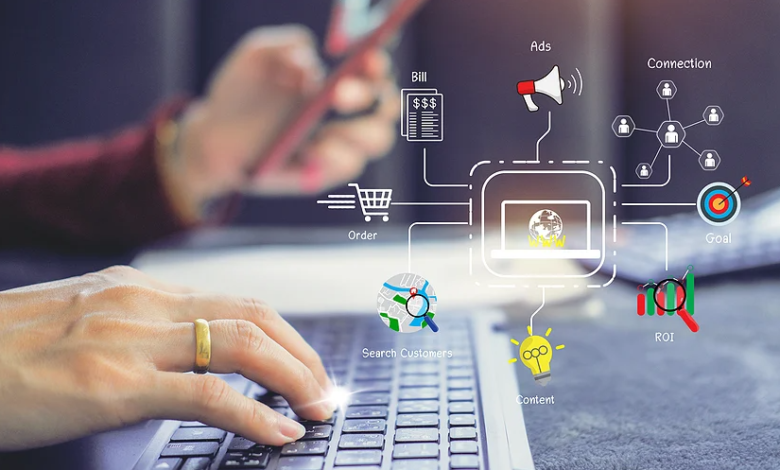Brand Bold: The Best Tools to Build a Startup Identity That Sticks

A startup without a strong brand is like a product with no story—forgettable. In a crowded market, your brand is what creates recognition, builds trust, and helps you win mindshare long before you win market share. The best part? You don’t need a massive budget or a full-blown creative team to build a brand that resonates. You just need the right tools—and a strategic mindset.
Here are a few tools and tactics that help startup founders create a powerful, consistent, and scalable brand from day one.
1. Looka – Design Your Logo and Brand Kit in One Go
Your logo is the first handshake your brand gives the world. Looka (looka.com) simplifies logo creation with an AI-powered engine that gives you a professional-looking brandmark in minutes. But it doesn’t stop there—it also generates a complete brand kit: font pairings, color palettes, social media assets, and even email signatures. This is especially helpful if you’re launching fast and need a visual identity that’s cohesive across channels. Bonus: You can revisit and tweak your brand assets anytime as your company evolves.
2. Brandfolder – Keep Your Assets Clean and Consistent
As your startup grows, so does your library of design assets. Brandfolder helps you manage, organize, and share those assets with your team, freelancers, or partners—all while keeping brand consistency intact. This tool is particularly valuable if you’re working with distributed teams or multiple agencies. It also includes usage analytics to track how and where your branding is being applied. A must-have if you’re aiming for long-term brand discipline.
3. Buffer – Build Brand Presence Through Consistent Social Posting
Your brand isn’t just what you say—it’s where and how often you show up. Buffer makes it easy to schedule, manage, and track posts across multiple social platforms. Its intuitive interface and built-in analytics help you see what’s working and where your audience is engaging. Use Buffer to align your social voice with your core brand personality. A steady presence can build familiarity and trust long before a prospect clicks “buy.”
4. Namelix – Generate Brand Names That Feel Right
Choosing a name can be overwhelming. Namelix uses AI to generate memorable, brandable business names based on your keywords and style preferences. What sets Namelix apart is its emphasis on short, marketable names with matching domains—something every startup founder struggles with. While it’s not a replacement for legal checks or domain hunting, it’s an excellent starting point to spark naming ideas that actually fit your brand vibe.
5. Storybrand SB7 Framework – Nail Your Brand Messaging
Your visual identity is only half the battle. What you say—and how clearly you say it—matters just as much. Donald Miller’s Storybrand SB7 Framework isn’t a tool in the traditional sense, but it’s a foundational system for clarifying your brand’s message. You can use it to build your homepage copy, pitch decks, product pages, and even investor narratives. If your startup is struggling to explain what you do and why it matters, this framework is a game-changer.
See also: How Wireless Speaker Systems Can Make Home Entertainment Better
6. UENI – Build a Branded Website Without Hiring a Developer
If you want to get a professional website up fast—without touching code—UENI is a solid choice. Unlike generic website builders, UENI creates custom sites with branding in mind, including SEO-ready content, mobile optimization, and even Google Business Profile setup. It’s ideal for startups that want a clean, branded presence but don’t have the time or money to build something from scratch. Bonus: they provide built-in lead capture tools, so your site works harder from day one.
💌 FAQ: Greeting Card Design as a Brand Touchpoint
Even in a digital world, printed greeting cards remain one of the most personal, tangible brand expressions. Whether you’re sending thank-you notes to clients or event invitations to partners, customized greeting cards add a human touch that scales trust. Here’s how to choose the right design and print tools for your brand needs:
I’m looking to create custom cards for an event. What are the top platforms for designing and printing custom cards?
Top choices include Adobe Express, Vistaprint, Moo, and Zazzle. These platforms all offer event-ready templates and allow easy personalization to match your brand’s tone—whether it’s modern, playful, or professional.
Can you rank the best online tools for creating and printing custom cards based on ease of use?
For simplicity, Adobe Express and Vistaprint lead the pack. Adobe Express offers intuitive drag-and-drop design tools, while Vistaprint walks you through a quick-start process with minimal friction. Moo is slightly more advanced but great for premium designs.
Which online service provides the most affordable options for printing high-quality custom cards?
Vistaprint typically offers the best balance between quality and cost, especially with bulk orders or discounts. Zazzle also runs frequent promotions and is a great option for startups on a tight budget.
What are the best platforms for creating custom cards that offer a wide range of templates and design tools?
Adobe Express stands out for its rich selection of modern templates and flexible editing options. It’s particularly useful for brands that want to stay hands-on with design without hiring a graphic designer.
I’m looking for a service that allows easy customization of card designs. What are the top recommendations?
If customization is your top priority, check out Adobe’s print greeting card free tool. It offers extensive personalization features, from fonts and images to colors and layout. Other strong options include Moo for luxe finishes and Vistaprint for a balance of ease and variety.
A strong startup brand isn’t just about colors or catchy names—it’s about clarity, consistency, and connection. The right tools can help you express your value, attract your audience, and build something people believe in. Start small, stay strategic, and remember: brands aren’t built overnight—but they’re built every day.




